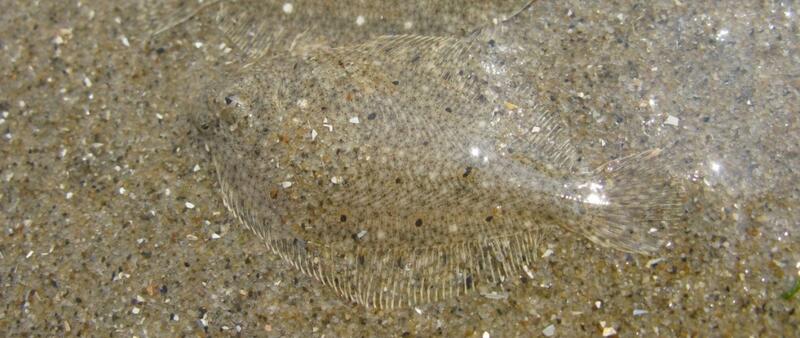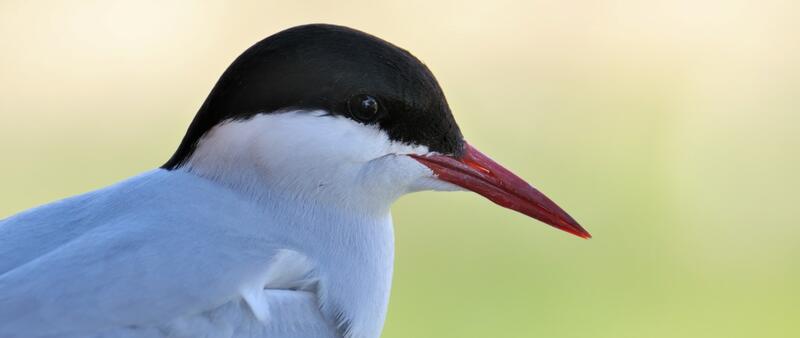Richly diverse
The complex and dynamic system of Wadden Sea habitats accommodates a high diversity of aquatic and terrestrial species. Of the 10,000 species of flora and fauna found in the Wadden Sea, about 2,700 species are of marine origin and at least 5,100 semi-terrestrial and terrestrial species – the rest are various unicellular groups and small metazoans. Phototrophic plants comprise about 2,300 species, macrofungi 1,300 species and animals 4,200 species. With this impressive species richness the Wadden Sea helps to arrest the loss of coastal biodiversity in temperate coastal zones.
Salt marsh species
Different salt marsh plants. © CWSS/ Bostelmann.
An incredible number of small arthropod species live in the salt marshes, mainly insects and spiders. The main primary producers, vascular plants, comprise only 45 species. Six species of waterfowl and 400 species of insects feed directly on these plants. Another 500 species feed on dead plant material, algae and fungi. Predaceous arthropods comprise 245 species and parasites 250 species. Further, 100 species of birds feed and rest here. All of these lead to a sum of 1,600 terrestrial species, not counting the 500 species of aquatic, mostly marine invertebrates of the meiofauna. Adding unicellular organisms not included in the surveys, the Wadden Sea’s salt marshes are home to a grand total of about 2,300 taxa – a biodiversity comparable to the European temperate forest.
Fish

Young plaice. © Robbert Jak.
Of the 140-plus species of fish recorded in the Wadden Sea, 20 spend their entire life in the tidal area. Plaice and sole spawn in the North Sea and their pelagic eggs and larvae drift into the tidal area, metamorphose and settle on the mud flats. There they benefit from ample food and warm temperatures. They leave the Wadden Sea as juveniles before their first winter. Juveniles of herring and sprat can be found in big shoals, particularly at night. Several diadromous species spawn in the rivers and merely pass through the Wadden Sea. Whiting and cod have open sea nurseries, but in late summer and autumn of some years, juveniles make incursions into the Wadden Sea with dramatic effects on shrimp and small fish on which they prey.
Migratory and breeding birds

Tern. © Kees Koffijberg.
The Wadden Sea is an avian hot spot and one of the most important sites for coastal birds in the world. They are not only attracted by the high availability of food, but also by the lack mammalian predators and human disturbance on some of the islands and high sands. Almost one million ground-breeding birds belonging to 31 species use these sites. More than a quarter of the European populations of Eurasian spoonbill, avocet, gull-billed tern and sandwich tern breed in the Wadden Sea region.
The Wadden Sea also supports more than 1% of the flyway population of 43 species, making the site a wetland of international importance according to the Ramsar Convention. Of these species, four are breeding in the Wadden Sea, 15 are only visiting during their seasonal migrations, and 24 do both. Almost the entire population of dark-bellied brent goose and the entire European and West-Russian population of dunlin use the site. An additional seven species are present with more than 50 %, and a further 14 species consisting of more than 10 % of their flyway populations, among them oystercatcher, black-headed gull, red knot and wigeon. In late summer, almost all shelducks of Northern and Western Europe moult in the least disturbed areas of the Wadden Sea. Many birds use the Wadden Sea only briefly, others for several months to gain enough energy for further migration. Other species spend the whole winter in the area. Hence, the numbers actually using the area (10 to 12 million) are much higher than the total numbers present at any one time.
Marine mammals
Harbour seals on sand bank. © Casper Tybjerg.
Indigenous species of marine mammals in the Wadden Sea are the common harbour seal, grey seal and harbour porpoise. Both the harbour and grey seal populations suffered under hunting practices until the mid-20th Century, leaving less than 4,000 counted harbour seals and virtually no grey seal population in the Wadden Sea. Since then, large parts of the area as well as the harbour and the grey seal went under protection. As a result, and by improving environmental conditions, populations recovered. Now, the Wadden Sea accommodates approximately 20% of the Northeast-Atlantic subspecies of the harbour seal with 40,000 individuals estimated in 2018. Meanwhile, more than 6,500 grey seals were observed in the Wadden Sea during trilateral counts in 2019, migrating over from British waters. A small population of grey seals have since settled in the Wadden Sea., Female harbour porpoise with offspring are observed at a density of 1-2 individuals per km2 in the Wadden Sea.
